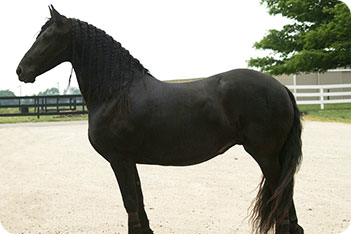
White Horse -Westbury
From: Equestrian and Horse
See Also: Uffington White Horse| Cherhill White Horse | Folkestone White Horse

The White Horse Of Westbury
White Horse of Westbury or the Bratton White Horse is a hill figure of a white horse standing still on Westbury Hill which is on Salisbury Plain, England.
The art of carving white horses in chalk upland areas is also known as Leucippotomy.
Why The Folkestone White Horse Was Created
The origin of the Westbury White Horse is a bit of a mystery. Some claim that it commemorates King Alfred the Greats victory at the Battle of Eoandun which is now known as Edington in 878.
Another thought is that the white horse was a heraldic symbol associated with the House of Hanover, the new British Royal Family during the 18th century, and that the Westbury White Horse may have first been carved in the early 18th century as a symbol of loyalty to them.
Location
The White Horse is located near to the villages of Bratton and Edington on Westbury Hill, on the edge of Bratton Downs and lying just below an Iron Age hill fort on the escarpment of Salisbury Plain, called Bratton Camp
Restoration
In 1778, the White Horse underwent restoration, a Mr. George Gee who was the steward to Lord Abingdon, had the horse re-cut to a more up to date horse design.
By 1873 the White Horse again needed restoring due to it becoming misshapen and so steps were taken to add edging stones to help prevent the chalk from moving.
In the early twentieth century the use of concrete was added to help hold the edging stones in place.
In the late nineteen-fifties the White Horse was covered in concrete and painted white in an attempt to reduce the amount of maintenance that it required.
This concreting and painting process was repeated in 1995.